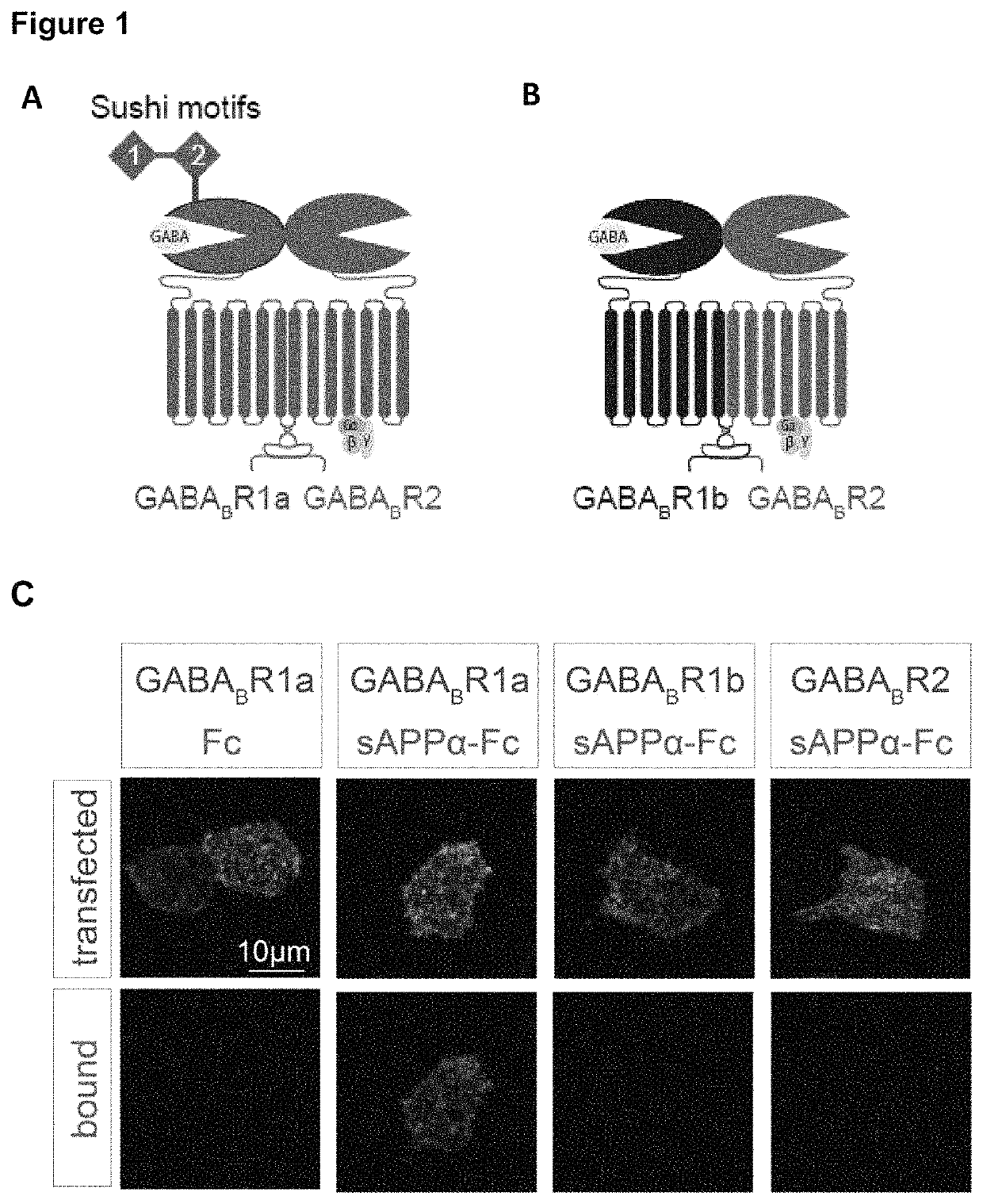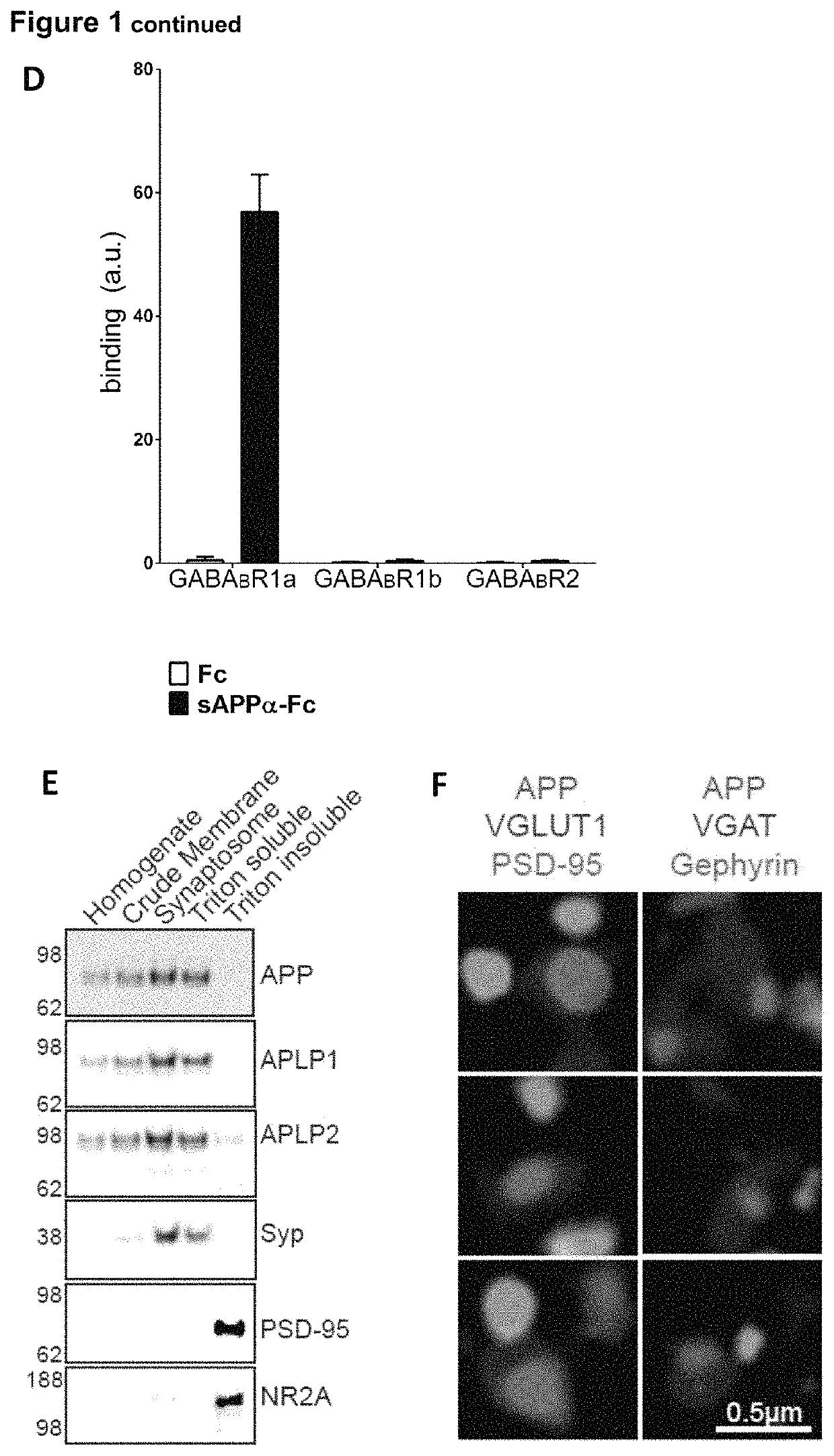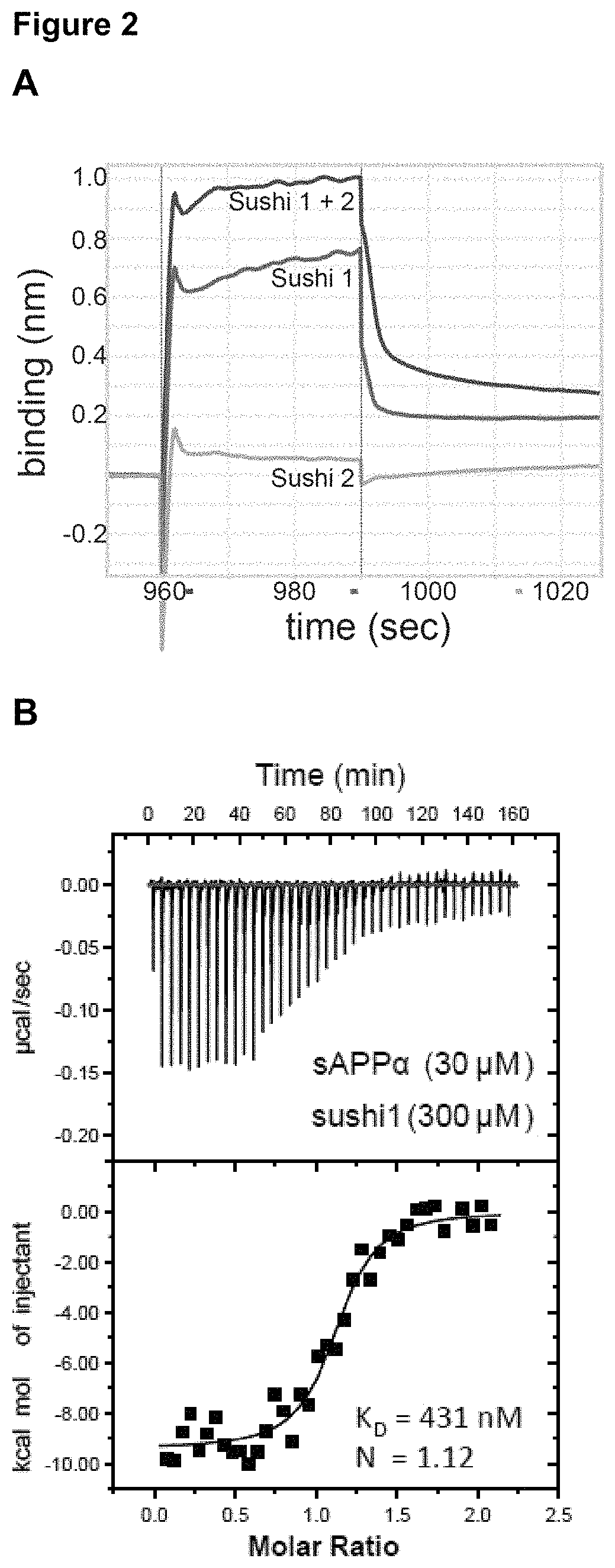Therapeutic agents for neurological and psychiatric disorders
a psychiatric and neurological technology, applied in the field of central and peripheral nervous system disorders, can solve the problems that the clinical use of gabasub>b/sub>r agonists is currently limited to the treatment field
- Summary
- Abstract
- Description
- Claims
- Application Information
AI Technical Summary
Benefits of technology
Problems solved by technology
Method used
Image
Examples
example 1
Identification of APP as Binding Partner of Sushi Domain 1 of the GABAB1a Receptor
[0132]Enrichment of APP at presynaptic terminals was determined through biochemical fractionation and super-resolution microscopy. APP and its family members, APP-like protein 1 (APLP1) and APP-like protein 2 (APLP2), were enriched in the synaptic fraction compared to the crude membrane fraction (FIG. 1E). Further, APP and the APLPs were strongly enriched in the Triton-soluble fraction containing the presynaptic protein synaptophysin (Syp), and were largely absent in the postsynaptic protein-containing Triton-insoluble fraction where the postsynaptic density protein 95 (PSD-95) and the NR2A subunit of the NMDA receptor are found (FIG. 1E). Using super-resolution structured illumination microscopy, we found that APP co-localized with excitatory and inhibitory presynaptic markers (vesicular glutamate transporter 1 (VGLUT1) and vesicular GABA transporter (VGAT), respectively), but not with excitatory and ...
example 2
Identification of the 33 Aa Domain in APP and of the 72 Aa Domain in the GABABR
[0134]To confirm the APPα-GABABR interaction and identify the interacting domains, we used a cell-based binding assay. Purified Fc-sAPPα (or its domains) were exogenously applied to GABABR-transfected HEK293 cells. Bound Fc-sAPPα was determined by immunofluorescence.
[0135]We first determined which GABAB subunit and isoform sAPPα bound. The GABABR is comprised of two subunits, the GABABR1 and the GABABR2 subunit. GABABR1 is present as two main isoforms (1a and 1b), with the only difference between these isoforms being the presence of two protein-binding sushi repeats in the ectodomain of GABABR1a (FIG. 1A-B). We found that Fc-sAPPα only interacts with GABABR1a which suggests that the sushi domains in GABABR1a mediate its binding to the APP ectodomain (FIG. 1C-D). Using BioLayer Interferometry we demonstrated direct binding and that the Sushi 1 domain (72 aa) is sufficient for binding sAPPα (FIG. 2A) and us...
example 3
Restriction of the Binding Domain in APP
[0137]We found that GABABR1a specifically interacts with APPα but not with its family members (FIG. 6A-B). The specific binding domain within the APPα extension domain (APP ExD or APP ED) is further narrowed down to sequence DDSDVWWGGADTDYADG. The APP ExD is not conserved in APLP1 and APLP2 (FIG. 6C-D) and, accordingly, sAPLP1-Fc and sAPLP2-Fc fail to bind GABABR1a-expressing cells (FIG. 6A-B). The ExD-AcD (FIG. 7A) fragment has similar binding affinity as sAPPα (FIG. 2B) in ITC experiments at an approximate molar ratio of 1. The two Trp residues and the DYAD motive are shown to mediate protein-peptide interaction. The flanking regions of the extension domain are low complexity regions not prominent in a specific protein-peptide interaction.
[0138]Alignment of the APP ExD from 7 vertebrate species reveals the strongest conservation within a 17AA stretch (FIG. 6D). This synthetic 17mer peptide binds sushi1 of GABABR1 with a KD of 810 nM (Figure ...
PUM
| Property | Measurement | Unit |
|---|---|---|
| frequency | aaaaa | aaaaa |
| frequency | aaaaa | aaaaa |
| frequency | aaaaa | aaaaa |
Abstract
Description
Claims
Application Information
 Login to View More
Login to View More - R&D
- Intellectual Property
- Life Sciences
- Materials
- Tech Scout
- Unparalleled Data Quality
- Higher Quality Content
- 60% Fewer Hallucinations
Browse by: Latest US Patents, China's latest patents, Technical Efficacy Thesaurus, Application Domain, Technology Topic, Popular Technical Reports.
© 2025 PatSnap. All rights reserved.Legal|Privacy policy|Modern Slavery Act Transparency Statement|Sitemap|About US| Contact US: help@patsnap.com



